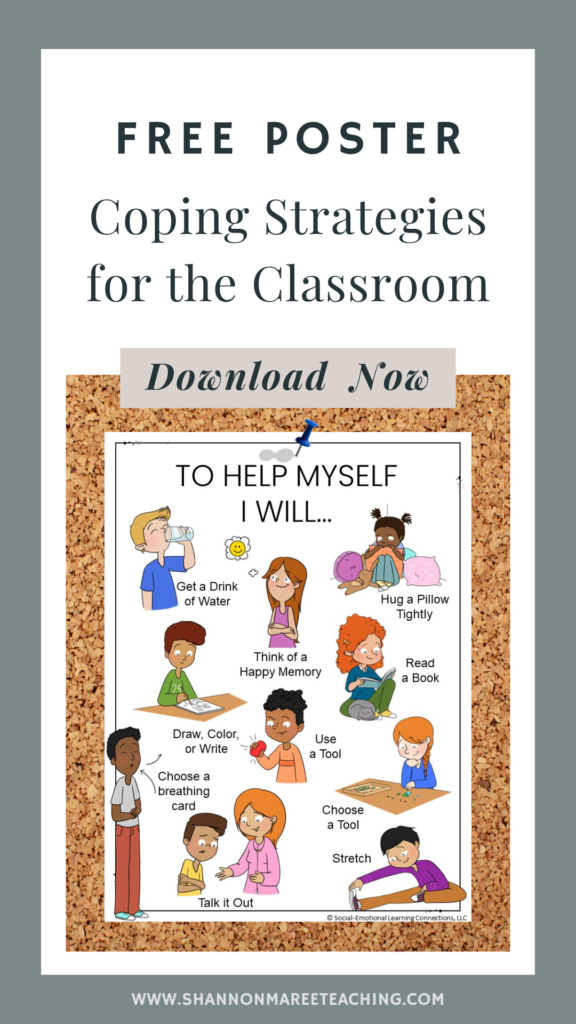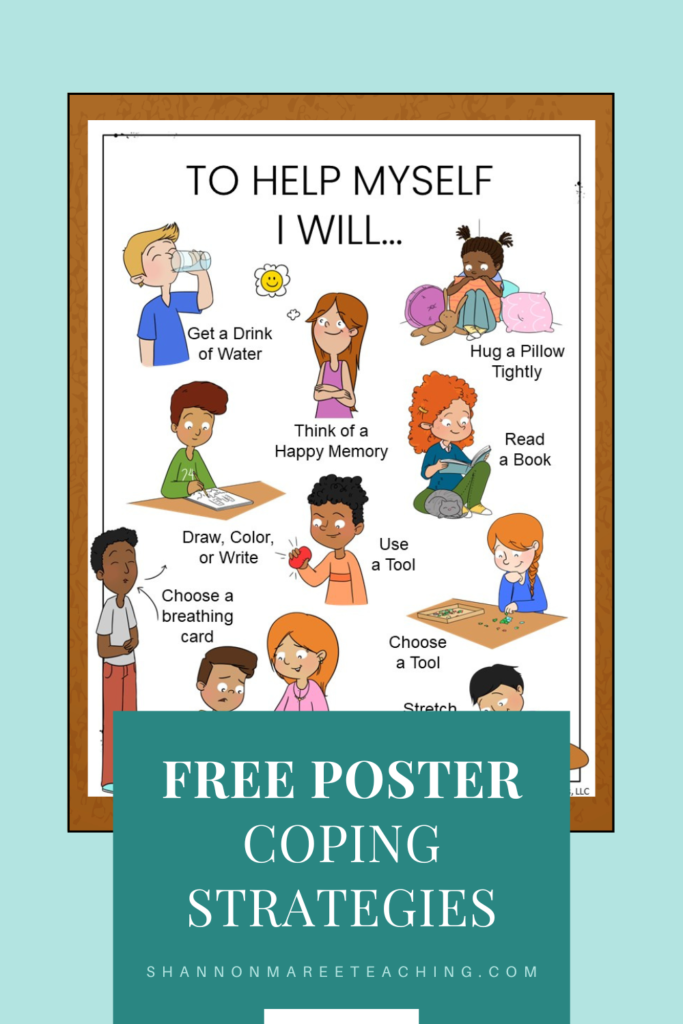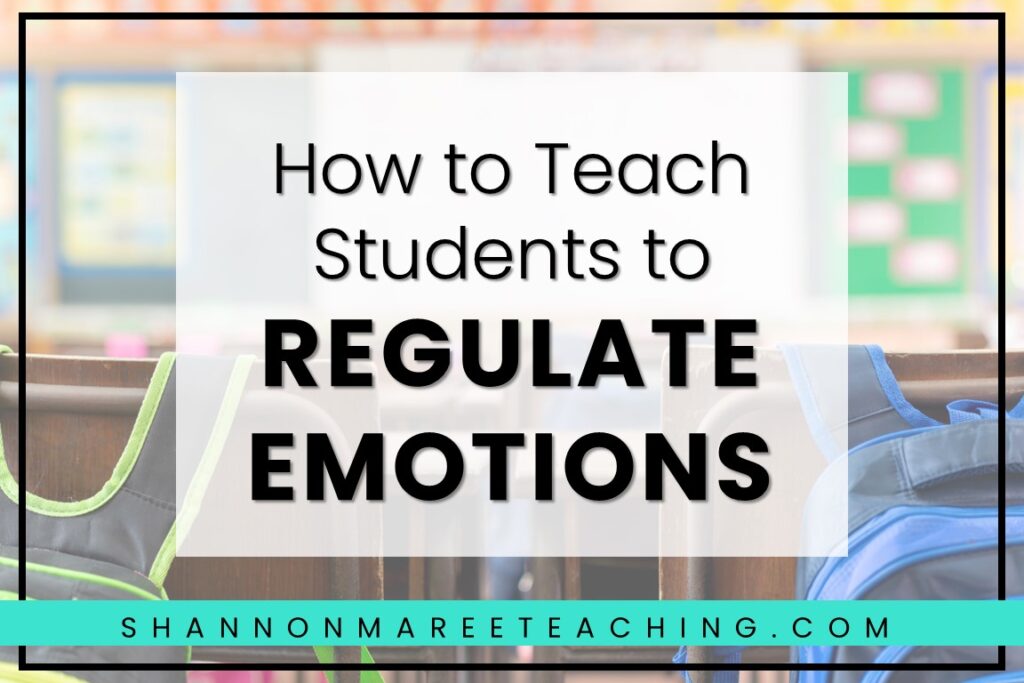
Managing Emotions in the Classroom
From emotional outbursts to completely shutting down, unmanaged emotions can cause a lot of issues in the classroom. One of the best skills we can teach our students is how to regulate emotions! There are so many amazing coping skills out there, the earlier our students know how to manage their emotions the more successful they will be; academically and socially.
Our students see new material and information everyday. Learning can bring up challenging emotions like frustration, anger, embarrassment, overwhelm, and leave our students too consumed by their emotions to think clearly. If our students are consumed by emotion they can’t make positive healthy choices.
What is Emotion Regulation?
To regulate emotions means knowing how to manage our feelings in a healthy way. Students will feel a range of emotions during the day. Students who can identify and express how they’re feeling, and choose a safe and healthy coping skill will build resilience, perseverance, self-awareness, and make more responsible decisions.
Keep in Mind
At this age, students can’t always think through difficult or challenging situations on their own, and they need support to do so. This is because the part of their brain (prefrontal cortex) that regulates our emotions and thoughts isn’t fully developed (and won’t be until into our 20’s). This is sometimes known as their “thinking brain.” The limbic system, also known as their “emotional brain” kicks in first at this age, often resulting in impulsive or flight or fight behavior. So how can we equip our students to manage their emotions?
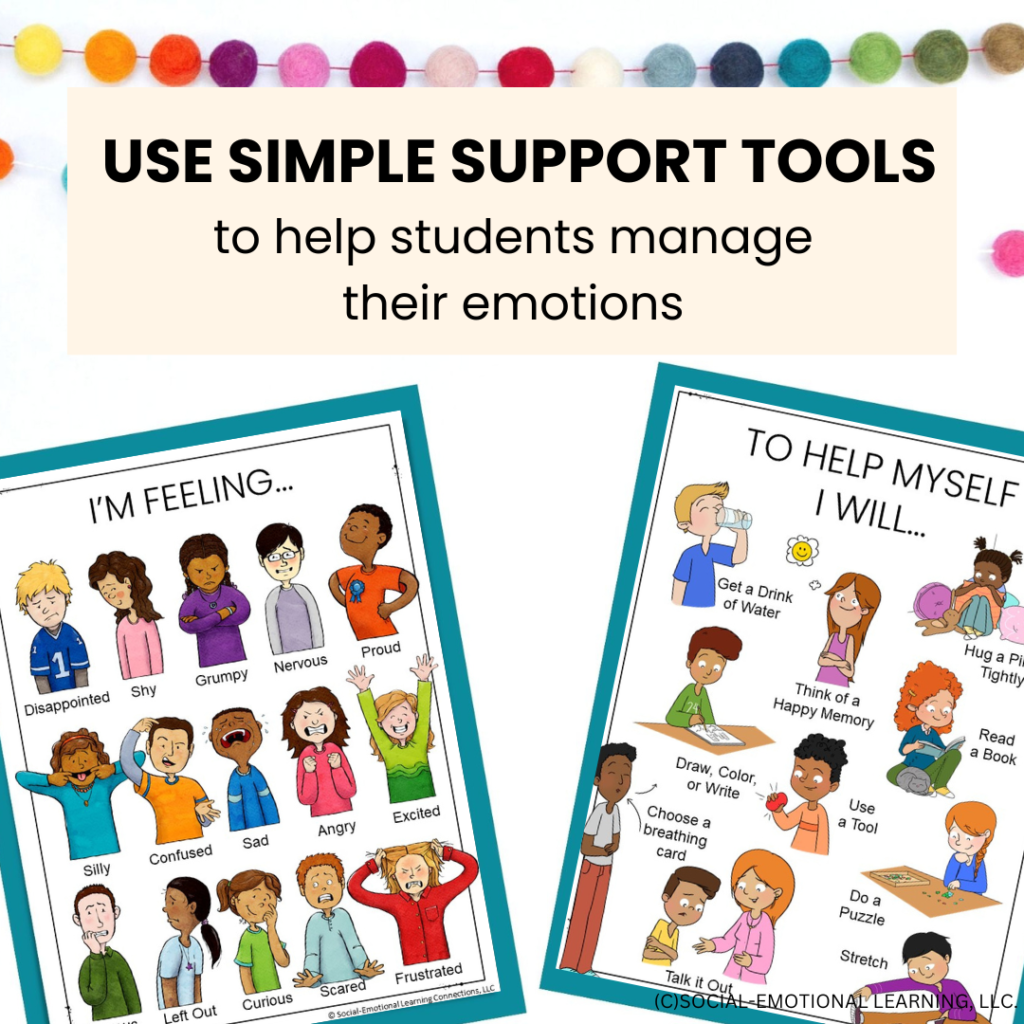
5 Ways to Teach Students to Regulate Their Emotions
1: Name the Emotion
This sounds like an easy step, and it can be. But we have some pretty complex emotions and so do our students. The more we can help our students name their emotions the better they’ll be able to choose a coping skill to work through the emotion. We can point out what various emotions may look like, feel like, and where we see them in the text we use. In upper elementary more complex emotions can be; jealousy, guilt, anxiousness, excitement, gratitude, surprise, disgust, awe, regret, pride, etc. When we help our students put names to different feelings they’ll better be able to identify those emotions in themselves.
The easiest way to pratice naming emotions is to highlight characters in your text. Whatever text you’re already using in class, pick a few characters to highlight. Here is a quick example on how to do that. Afterwards, we can ask; what emotions are they feeling? Encourage students to use names other than sad, happy, mad. What caused them to feel that have way? Have your students ever felt that? What are some coping skills that character could use? Did the person in the text handle the situation in a healthy way or not? What could they have done differently?
2: Teach Coping Strategies for Students
Once students can identify various feelings, it’s important to equip them with a skill set to help regulate emotions. These are often referred to as coping strategies or skills. You can grab my coping strategies poster for free, click here: https://www.madetobeme.com/coping-strategies-poster
3: Practice Coping Strategies When Calm
When a student is disregulated, or feeling a strong emotion, that is NOT the time to practice. I’ve found the best way to teach coping skills is to spend a few minutes teaching the skill then follow with practice and reflection.
➡️Additionally, when teaching coping skills we want to focus on how different emotions can feel in the body, what warning sensations or triggers we might feel that can be early warning signs for our brain that we need to make a change.
A great way to hold students accountable while practicing coping skills is to have them journal on some of these prompts:
- How did you feel before/after the exercise?
- Is this a coping skill you think you’ll try?
- What are some situations this coping skill could help?
4: Have a Space to Regulate Emotions
Whether you devote a phyiscal space, like a calm corner, in your classroom to help regulate emotions or if you use a more space-friendly folder, mobile calm kit, or any variation you’re going to see a huge improvement in students ability to regulate emotions with minimal support and on their own.
Habits allow us to go through the motions and take action even when our brains may be overstimulated by emotions. By making a space or tool part of a habit helps students make helpful decisions in difficult moments.
5: Use a Variety of Tools to Regulate Emotions
Choices matter! A TOOL THAT WORKS ONE TIME, MAY NOT WORK THE NEXT TIME. This is SO important to teach our kiddos. Deep breathing may have helped yesterday when you were nervous about riding a new bus home, but today when you’re feeling angry that you were left out of a game deep breathing may not help. That’s why we should always have a variety of tools in our toolbox to help us regulate emotions!
When we help our students practice a wide variety of tools to regulate emotions we’re giving them positivie healthy choices. I like to keep a poster on our wall that displays a multitude of coping skills that would be positive options to choose when they’re experiencing big emotions.
MY BEST ADVICE – Add cardboard! Here’s why…
Often, a student may need to do “heavy work” for their body to feel calm again. In some situations, mindful breathing can be a tremendous help, while in other situations it’s just not enough. The proprioceptive system gives us a sense of body awareness and detects force/pressure. Doing heavy work will really help some students feel grounded and help to regulate emotions.
Here are some of my favorite ways of how to include heavy work:
- Include cardboard strips in your calm corner to rip, bend, or tear
- Have the students deliver a stack/crate of books to another teacher
- Stack chairs
- Earse/clean the main board or small wipe boards
- 3-hole punch papers for you
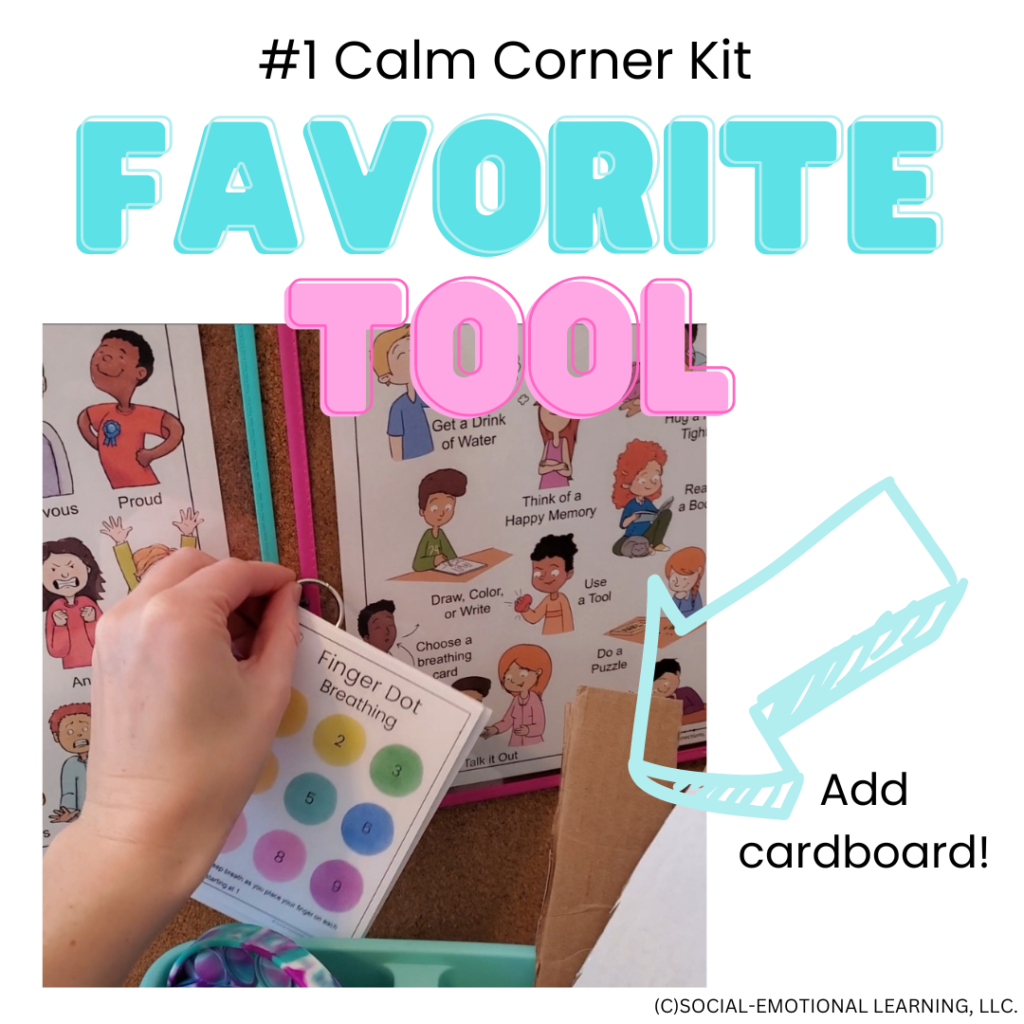
Everyone Benefits When We Regulate Emotions
We can teach our students that when we regulate emotions not only do we help ourselves make healthy choices but it also means we can be better friends. Part of regulating our emotions is understanding that everyone else has feelings too. Just like we want others to understand and respect our emotions, we should do the same for them. What an important and perspective changing concept we can easily teach our students.
